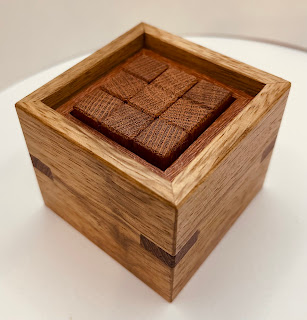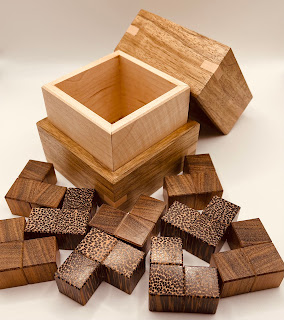I’ve made several of this design previously, this copy features Zebrawood pieces. Tray is Black Limba with a Red Zebrawood Bottom. Slipfeathers are Leopardwood.
Here’s Stewart’s description:
“For a while I became absorbed in the form of mathematical amusements that I call square root type puzzles. In 2001 I disseminated a 20-page report, Square Root Type Packing Problems, with limited distribution. A condensed version was included in the 2014 Appendix. I also wrote a couple articles on the subject and contributed to a third. Out of all that came a deluge of puzzle designs. Rather than clutter up this Compendium with all of them, I have selected just a few of the more unusual. I consider Martin’s Menace the best of all my numerous designs in this category, especially because of its deceptive simplicity. It was an IPP exchange puzzle under the original name Four Fit. It is all based on psychology. None of the four pieces rests comfortably in a corner or even touches two sides, so where does one start? Many puzzle experts have been baffled by it, even the great Martin Gardner, hence the change of name. To quote from one of his three furtive letters concerning it: “It’s the finest dissection puzzle of all time. It looks easy but is fiendishly difficult. I wasted a week trying vainly to solve it.”




















